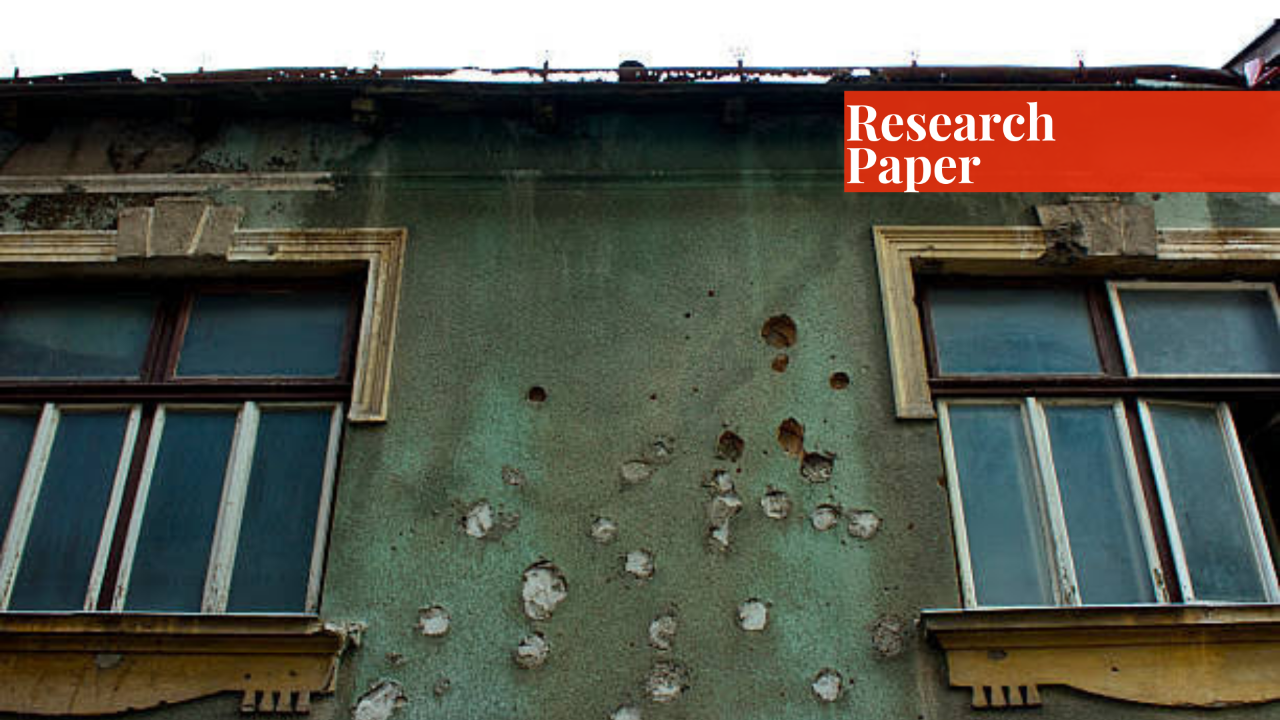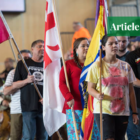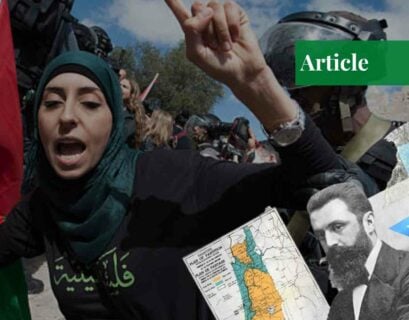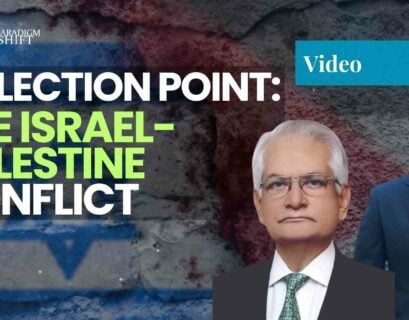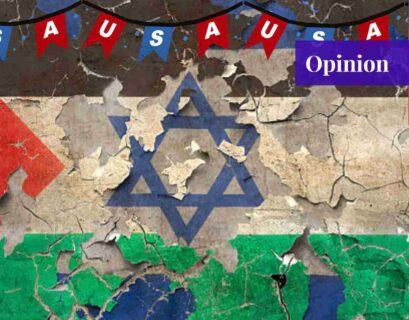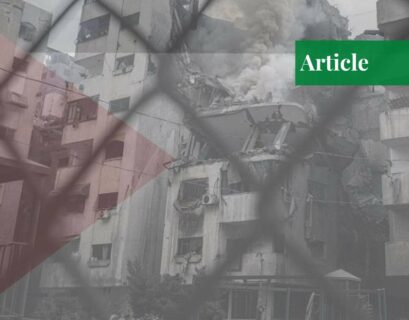Lyba Mobeen is currently pursuing her degree of BS-International Relations from Islamic University Islamabad.
The Bosnian War (1992-1995) was the most horrendous and deadliest episode of bloodshed, slaughter, which also caused the Srebrenica genocide, on European soil since WWII. It was a multi-ethnic, international armed conflict between the three main ethnic entities of Bosnia, that is, the Bosnian Muslims or Bosniaks (44%), the Orthodox Serbs (32.5%), and the Catholic Croats (17%) initiated by the independence movement which emerged in the Balkan region in the 1990s.
The Bosnian war had two divisions: the Serb-Bosniak war (1991-1995) between the Serbs and the Muslim-Croat alliance, and the Croat-Muslim War (1992-1994) between the Croatians and Bosniaks. The paper, however, centrally deals with the Serb-Bosniak war and the genocide of Muslims at the hands of Bosnian Serbs and Yugoslavs.
The catastrophe had brought about the deaths of 250,000 Bosniaks which were the primary victims of this war. In addition, displacement of 2.5 million people, rape of 50,000 women, the slaughter of 8500 Bosniak men and boys in the Srebrenica genocide added to the devastation caused by the Bosnian Serbs, backed up by Serbia and Bosnian Croats, assisted by Croatia.
Historical Background
The country which was referred to as the Socialist Federal Republic of Yugoslavia (SFRY) in the post-WWII era was initially known as the Kingdom of Yugoslavia since 1918 when the Ottoman Empire disintegrated and the Empires of Austria-Hungary, Serbia and Montenegro fell under one territory.
However, the circumstances shifted in 1941 when the Kingdom of Yugoslavia fell under the influence of Nazi Germany and Fascist Italy. After World War II, when the Allied powers emerged victoriously, Yugoslavia was re-created as a communist state with the name “the Socialist Federal Republic of Yugoslavia”. The state included six republics namely Croatia, Slovenia, Bosnia and Herzegovina, Serbia, Montenegro, and Macedonia.
With much ethnic diversity, Yugoslavia always witnessed stress and accelerated tensions among its ethnic groups. President Josip Broz Tito, during his tenure, had suppressed these engagements and kept all the six republics glued together under the slogan of “Brotherhood and Unity”, but with Tito’s death in 1980, poor economic indicators of Yugoslavia festered ethnic tensions.
Additionally, increased nationalist sentiments, failure of Communism worldwide, and the amalgamation of Slobodan Milosevic’s election as the Serbian leader amounted to a series of increased clashes and conflicts in the Balkan region which ultimately led to the wars of the Balkans and disintegration of Yugoslavia.
Milosevic’s Role
Milosevic, a protagonist of Centralisation and Serb dominance (Greater Serbia), could not digest the fact that the Republics wanted independence and that the Balkan Serb community would be divided. That is why when the Republics opted for independence, the Serb-dominated Yugoslavian Army under the commandership of Ratko Mladic waged wars upon them.
With the referendum, Bosnia conducted in February 1991 (resulting in 99.7% of the votes in favor of independence versus the 0.3% against the decision. Bosnian Serbs mainly boycotted the referendum, the turnout was 63.7%)1, tensions between Bosnian Muslims, Croats and Serbs escalated which eventually led to an all-out war amid them.
Starting from Croatia and Slovenia on 25th June 1991, followed by Macedonia on 8th September 1991, Bosnia and Herzegovina on 1st March 1992, Montenegro on 3rd June 2006, and Kosovo in February 2008, Slobodan Milosevic did not allow any republic (except Macedonia) to gain independence through peaceful means, but through war, bloodshed and suffering.
A U.S. State Department spokesman observed that, “Milosevic “was the principal figure responsible for the violent dismemberment of Yugoslavia in the 1990s, including the outbreak of two horrific wars in Bosnia and Kosovo.”2
The Bosnian War
However, amongst all the Balkan Wars, the deadliest battle was the Bosnian War (1992-1995) where the genocide, massacre, and ethnic cleansing of Bosnian Muslims shook the entire European and International community to roots.
Mass Killings
The war which initially emerged as an independent resistance soon transformed into an ugly ethnic conflict, fuelled up by Serbia and executed by Bosnian Serbs. A month after the declaration of Bosnian independence in March 1991, and two days after the recognition of Bosnia by the UN, a Serbia-based paramilitary group invaded into the Bosnian territory through the city of Bijeljina, following the murders of 48-78 non-Serb civilians (mainly Muslims) in a single day.
This annexation continued throughout April in the bordering villages, towns, and cities of Bosnia and Serbia, causing displacement and ethnic cleansing of thousands of non-Serbs. On 9th January 1992, after eradicating a majority of the non-Serbs, the Bosnian Serbs announced their succession from Bosnia through a self-proclaimed Serbian territory, the Republic of Srpska, with its own government and military, which would later integrate itself into the Serbian territory fulfilling the dream of “Greater Serbia”.
In April, the Bosnian Serb Army laid siege to the city of Sarajevo (Bosnian capital) for a period of four years, as the longest siege of a capital in modern history. The siege caused the death of 11,500 non-Serbs and the displacement of 150,000 non-Serbs. From April till August, the Bosnian Serbs massacred 3100 non-Serbs in Prijedor and 3000 Bosniaks in Visegrad from May till August.
These mass killings reflected the Serbian intention of eradicating the Bosnian Muslims from the region of the Republic Srpska, to achieve a Serb majority republic and later on amalgamate the Serbians on both sides of the border, that is, in Bosnia and Serbia.
Concentration Camps
During the same period, the Bosnian Serb army started establishing concentration camps in different cities, allegedly 677 in total, where the Bosniak and Croat men and women were imprisoned. The most infamous camp was the Omarska, an iron ore plant in the town of Omarska, where 700 detainees died in a matter of few months.
In the words of a camp survivor Nusreta Sivac, “There were so many awful things that happened starting with mass killings, torture, harassment, starvation, beatings and killing people using different objects”.3 Men and women in Omarska were tortured and beaten during the day and raped at night.
Nusreta further added, “Rape was meant to break a woman psychologically. It was a specific manner of sexual abuse that took place in Omarska”.4 Another notorious concentration camp had been established in a hotel called Vilinia Vlas in Visegrad which came to be known as the “Brothel Camp” where about 7000 Bosnian Muslim women and girls as young as seven were held captive and raped continuously for eight months.
Towards the end of 1992, approximately 3000 more non-Serbs had been murdered in the cities of Zvornik, Vlasenica, and Tuzla, but it was the Foca Massacre (1992-1994) with 2074 Muslim murders and 21000 non-Serb displacements, which eventually led to the bloodiest ethnic cleansing campaign in Srebrenica.
Genocide in Srebrenica
After being displaced from multiple cities of the Republic of Srpska, the Bosniaks fled to Srebrenica which was declared by the UN authorities as a “Safe Zone” monitored by a meager number of 450 Dutch Peacekeeping Force. When the town flooded with Bosniaks, Mladic set up his new target and started closing in on Srebrenica as it was a strategically important town in Eastern Bosnia so cleansing it of Muslims was a paramount task for him.
About 20,000 Bosniaks moved to Potocari, a UN base in Srebrenica, which was soon invaded by the Bosnian Serb Army on 11th July 1995. The Serb army separated teenage and middle-aged men from women, kids, and the elderly and the massacre began. Men were gathered in places like schools, hospitals, closed buildings, open plains, meadows, to be executed and an unknown number of women were raped and murdered, whereas the remaining were sent to concentration camps.
The massacre continued for five days, where the former “safe area” was flooded with blood, wailings, and cries until the last of the male was eliminated, whereas the Dutch forces who were supposed to be protecting civilians, were ordered by their higher authorities to not engage and the international community was naïve enough to be unaware of what was happening.
After 19th July 1995, about 8500 Muslim men had been brutally murdered out of which 6671 bodies or remains have been found, but 236 are still missing, an unknown number of women were raped, and thousands were displaced once again.
Markale Massacre
Although the last nail in the Serbian coffin was the Markale Massacre by the Bosnian Serb Army, a series of two bombardments on the Sarajevo’s marketplace left 68 dead and 144 injured non-Serbs in the first phase on 5th February 1994 and 43 dead and 75 wounded non-Serbs in the second phase on 28th August 1995.
Soon after the bomb-blast, NATO opened airstrikes against the Bosnian Serb Army and brought about the signing of Dayton Accords on 21st November 1995, from which stemmed two independent political entities under one state of Bosnia and Herzegovina: the Serb-populated Republic of Srpska and the Croat-Boniak populated Federation of Bosnia and Herzegovina.
Response of the International Community
The reaction of the international institutions and Western states was of complete indifference and disregard to the massive genocide taking place in Bosnia. The champions of human rights and justice have had a long-held history of reacting when the situation gets out of control and becomes unmanageable. Their nonchalant attitude in armed conflicts continued throughout the Bosnian war and once again Muslims had to pay the price of their apathy and lack of concern.
European Union
European Union had imposed an arms embargo on Yugoslavia in July 1991 in the wake of the separatist, nationalist, and independence movements, but the Serbians had already gathered all the arms and weaponry from the six republics, which provided them with the required artillery to attack non-Serbs and defend themselves.
UN Security Council also inflicted an arms embargo on the Yugoslavian Republics, leaving the Bosniaks with no technology, no modern weapons, only hunting apparatus and orthodox rifles to defend themselves with. Additionally, when Russia pulled out of the Balkan region, they supplied 4000 arms trucks to Serbia to be used against the non-Serb Bosnians while the EU remained quiet despite knowing the situation.
Amongst all the European states, it was Britain and France who constantly refused to lift the sanctions and embargos, not allowing Bosnia its very right of defending itself which ultimately paved the way for Bosnian suffering.
The reason behind this was their efforts to coerce the division of Bosnian territory amongst the Croats and Serbs, alienating the Bosnian Muslims and if the restrictions upon the Bosniaks had been elevated, their ambition to break up Bosnia would have been left unattended.
Since UK and France were important US allies and worthy NATO and UN members, all of their international allies also remained tight-lipped. The aid and support from Muslim countries was the sole hope for Bosnia which allowed Bosniaks to neutralize attacks to a limited extent.
A US Professor and a member of Dayton Accords, Paul R. Williams, said in an interview, “…those states continuing to enforce the embargo violate some of the most basic principles of justice and international law. It is my firm belief that the act of denying Bosnia the right to prevent its own destruction and the genocide of its nationals calls for the determination that the embargo is illegal and exceeds the authority of the Security Council.”5
United Nations
United Nations failed the Bosnian Muslims on many fronts. Initially, the UN refused to acknowledge the presence of Serbia and Croatia behind the Bosnian Croats and Bosnian Serbs, neglecting its own rule which in article 2(4) mentions that no state should breach the territorial integrity of any faction in an international armed conflict.
Another failure of the UN was its constant assertion that the crisis was a “civil war” and “internal conflict” and subsequent refusal to get involved in it. Furthermore, the illicit arms embargo it imposed under Resolution 713 was not legal as it had not recognized Bosnia as an independent sovereign territory that made the sanctions illegal and in defiance of its own articles.
The UN itself legitimized ethnic cleansing and land grabbing by accepting it in its peace plans namely Vance-Owen Peace Plan and then Owen-Stoltenberg Peace Plan. The inclusion of the “safe-area” strategy also welcomed the forceful annexation. The worst dereliction on the UN’s behalf was its inability to protect the safe areas of Srebrenica, Sarajevo, Gorazde, and Zepa, which were taken over by the Serbs one after the other despite the presence of UNPROFOR peacekeeping troops.
After the unfortunate incident where hundreds of UNPROFOR soldiers were kept captive by the Bosnian Serbs in June 1995, the UN Secretary-General announced that they would now shift to “traditional peacekeeping”, by reducing the number of troops and disarming a majority of them, giving the Serbs a subtle indication to come and take over these areas as they like.
Dutch Peacekeeping Missions
Another significant entity liable for the Srebrenica Genocide was the Dutch Peacekeepers in the region. It was in the presence of these soldiers that the Mladic forces overran the safe zones of Srebrenica and surrounding towns and villages and butchered about 8500 men. Had the Dutch been better equipped, better supplied, and better trained, a lot of those atrocities could have been avoided.
Anne Muldar, a Dutch soldier present at the Srebrenica genocide said, “We didn’t have many supplies, very little petrol, fuel for heating, and not much to eat, just some Canadian and French rations. Occasionally we had some ‘fresh’ food if a convoy was allowed to come into the enclave. But all this was controlled by the Bosnian Serbs”.6
As per the Dutch point of view, the soldiers constantly asked the UN for aerial support and arms which the UN declined time and again. Henk Van Der Berg, the Dutch soldier present in Srebrenica quoted, “On day two or three, the Serbs crossed that line and no air support arrived. Every time they advanced further; we created a new frontline. This went on for about two days before we ran out of bullets and then we drove back to Potocari.”7
United States
United States’ lack of leadership role in the Bosnian crisis could be attributed to the Presidential elections of 1996 before which the Clinton administration was not in the mood of any adventurism which could risk the future electoral results. Furthermore, since the Bosnian region bears “no oil”, the US’s interest in the country and its conflicts reduced manifolds.
However, soon after the Srebrenica genocide, witnessing the horrors and havoc that was brought by the ethnic cleansing, the Republicans in the Congress and House of Representatives pressurized the US government to shift its foreign policy outlook and to uplift the weapons embargo. The US then intervened through NATO airstrikes.
Has Justice Been Brought to the Victims of the Bosnian Genocide?
On 25th May 1993, with the Bosnian War still going on, the UNSC established an ad hoc Criminal Tribunal called the International Criminal Tribunal for Former Yugoslavia (ICTY). The aim was to prosecute and punish the war criminals accused of perpetrating crimes against humanity including genocide.
With such a decision arose the hopes and expectations of the victims of such atrocities that finally justice will prevail but the hope was short-lived. Alas, the ICTY could not come up to the expectations of the Bosnians and failed to grant justice.
Amongst the 161 people it charged till 2017, 80 of them have been convicted but a majority of them are still in their trials of appealing before the International Court of Justice (ICJ), some have died during the trial and others have been able to reduce their sentences to merely a few years and are today back in their lives, celebrated amongst Serbians as war-heroes.
All the accused criminals of the Srebrenica genocide fled to Serbia, which proved to be a safe haven for them with government support. Chief perpetrators including General Mladic and President Milosevic hijacked justice for 16 and 13 years respectively before they were caught by the authorities from Serbia.
The failure of the international community can be acknowledged by the fact that even after 29 years of the genocide, the perpetrators of the Srebrenica genocide have not been held accountable. During Milosevic’s trial in 2006, he died of cardiac arrest, as a legally free person. Neither was he convicted of his crimes nor did he serve his punishment.
Mladic (General of Bosnian Serb Army) was sentenced to life imprisonment in 2017 and he filed an appeal, which to date, has yet to be started. With Mladic’s failing health, the victims are fearful that he would also die a natural death and that, too, before being held responsible for his inhumane activities.
Radovan Karadzic, the Supreme Commander of the Bosnian Serb Army and one of the main organizers of the Srebrenica massacre was convicted of genocide and war crimes and sentenced to 40 years imprisonment in 2016, but he is still being trialed under his appeal and has not begun his punishment till today.
Slobodan Praljak, a Bosnian Croat Army (Croatian Defence Council) General who was convicted along with six other Generals, on the charges of ethnic cleansing of Bosnian Muslims from the Mortar was given a 20 years’ imprisonment in 2017, however, he refused to accept the judgment and drank poison in the Hague court in front of the entire judiciary panel and did not serve 1 day of imprisonment.
Others including, Goran Jelisic, Momsilo Krajnisnik, Milomir, Stakic, have been convicted of the genocidal accusations but have been successfully able to lessen their sentences. In 2002, a report by the Netherlands Institute for War Documentation, on the Dutch role in the Srebrenica genocide came out and accused the political, military, and civil authorities equally responsible for not preventing the genocide and caused the resignation and dismissal of the entire Dutch government.
The report initiated a ray of hope of justice for the victims and their families, but with no further progress other than the resignations, the hope died again. Hassan Nuhanovic, a Srebrenica survivor said, “I want Justice – and it is not done by the resignation of Ministers.”8 However, the Dutch Supreme Court accused the Dutch soldiers of only 10% of limited liability over 350 deaths, causing distress and anger among the victims’ families.
The plaintiffs (Mothers of Srebrenica) had filed a case to convict the Dutch of being responsible for all the 8000 genocidal deaths, but the state surely wanted to disassociate its name from the crime and thus, it ruled out in its favor. Munira Subasic said, “It was a humiliation again. Just like in 1995, the Dutch were in charge, and we didn’t know what was going on.”9
In 2017, ICTY transferred the remaining war crime cases to the State Court of Bosnia and Herzegovina, knowing of obstacles such as lack of transparency and efficiency in the legal system, Political influence of different factions, people’s mistrust in Judiciary, poor resources, and fragmented judicial system, would hamper and delay the judicial proceedings.
Serbian leaders, till today, deny the genocide, calling it a lie and propaganda, and refuse to accept its involvement in the massacres. Popovic (a Minister of the federal government of Serbia) said, “I emphasize there was no genocide in Srebrenica whatsoever and that Serbs will never agree to be branded as a genocidal nation.”10
The biggest disappointment on behalf of ICTY was its initial judgment regarding the consideration of genocidal crimes in Bosnia and Herzegovina against Serbia and Montenegro. On 26 February 2007, the verdict of the tribunal came out, acknowledging the mass murders of Srebrenica in July 1995 as genocide but ruled out any possibility of Serbia’s involvement in the planning or execution of the genocide.
The Serbians celebrated the decision as “Victory of Justice”, whereas the victims felt betrayed by the judicial system, and once again their hopes of witnessing true and equal justice, was shattered into pieces.11 The fact that, as of today, more than 3000 cases of war crimes are in line to be trialed and many of the principal criminals of the genocide are on the loose and roaming about freely, is itself a proclamation of the failure and negligence of the United Nations, ICJ, and ICTY.
Conclusion
The decade of the 1990s marks a dark chapter in the history of the Balkans, specifically for the Muslims of Bosnia, for Europe, and the international community. The perpetrators of the Srebrenica genocide wanted to eradicate the Muslim population from Serbian areas and the census from 2013 onwards showed the same.
A decline of 50-100% in the Muslim population in the Eastern and Northern parts of Bosnia was observed. With massive killings, violence, persecution, and the lack of justice, equity and fair play, the purpose and efficiency of the United Nations to maintain international peace and stability were brought into question. Even after the 26th anniversary of the dreadful Bosnian War and 29 years of the Srebrenica genocide, the victims are still fighting and anticipating justice.
Bibliography
- “The Breakup of Yugoslavia,” YouTube Video, 16:49, “WonderWhy,” May 1, 2016, https://www.youtube.com/watch?v=oiSgAiM0d8A.
- Chicago Tribune.2006. “The Butcher of the Balkans.” Chicago Tribune, March 13,2006. https://www.chicagotribune.com/news/ct-xpm-2006-03-13-0603130128-story.html.
- Brown, Barlow, Tom.2019. “It Was Hell’: Dutch Troops Recall Failure to Stop Srebrenica Deaths.” Balkan Insight, August 8, 2019. https://balkaninsight.com/2019/08/08/it-was-hell-dutch-troops-recall-failure-to-stop-srebrenica-deaths/.
- News Desk, 2002. Dutch Government quits over Srebrenica.” BBC, April 16, 2002. https://news.bbc.co.uk/2/hi/europe/1933144.stm.
- News Desk,2019. “Srebrenica massacre: Dutch state ‘10% liable’ for 350 deaths.” BBC, July 19, 2019. https://www.bbc.com/news/world-europe-49042372.
- SáCouto, Susana. “Reflections on the Judgment of the International Court of Justice in Bosnia’s Genocide Case against Serbia and Montenegro.” Human Rights Brief 15, no.1 (2007): 2-6.
- “The Butcher of Bosnia – BBC Newsnight,” YouTube Video, 14:52, “BBC Newsnight,” November 17, 2017. https://www.youtube.com/watch?v=SwChX2Ih91c
- “Ethnic Cleansing of Bosnian Muslims —explained,” YouTube video, 3:58, “Al-Jazeera English,” October 9,2018.
1 “ The Breakup of Yugoslavia,” YouTube Video, 16:49, “WonderWhy,” May 1, 2016, https://www.youtube.com/watch?v=oiSgAiM0d8A.
[2]Chicago Tribune.2006. “The Butcher of the Balkans.” Chicago Tribune, March 13,2006. https://www.chicagotribune.com/news/ct-xpm-2006-03-13-0603130128-story.html.
[3] Ronc, Nadina.2017. “Justice at last for Bosnian Resistance Figure.” AA, October 12, 2017. https://www.aa.com.tr/en/analysis-news/justice-at-last-for-bosnian-resistance-figure/933801.
[4] Brown, Barlow, Tom.2019. “It Was Hell’: Dutch Troops Recall Failure to Stop Srebrenica Deaths.” Balkan Insight, August 8,2019. https://balkaninsight.com/2019/08/08/it-was-hell-dutch-troops-recall-failure-to-stop-srebrenica-deaths/.
[5] News Desk, 2002. Dutch Government quits over Srebrenica.” BBC, April 16, 2002. https://news.bbc.co.uk/2/hi/europe/1933144.stm.
[6] News Desk,2019. “Srebrenica massacre: Dutch state ‘10% liable’ for 350 deaths.” BBC, July 19, 2019. https://www.bbc.com/news/world-europe-49042372.
[8] SáCouto, Susana. “Reflections on the Judgment of the International Court of Justice in Bosnia’s Genocide Case against Serbia and Montenegro.” Human Rights Brief 15, no.1 (2007): 2-6.
If you want to submit your articles and/or research papers, please check the Submissions page.
The views and opinions expressed in this article/paper are the author’s own and do not necessarily reflect the editorial position of Paradigm Shift.
